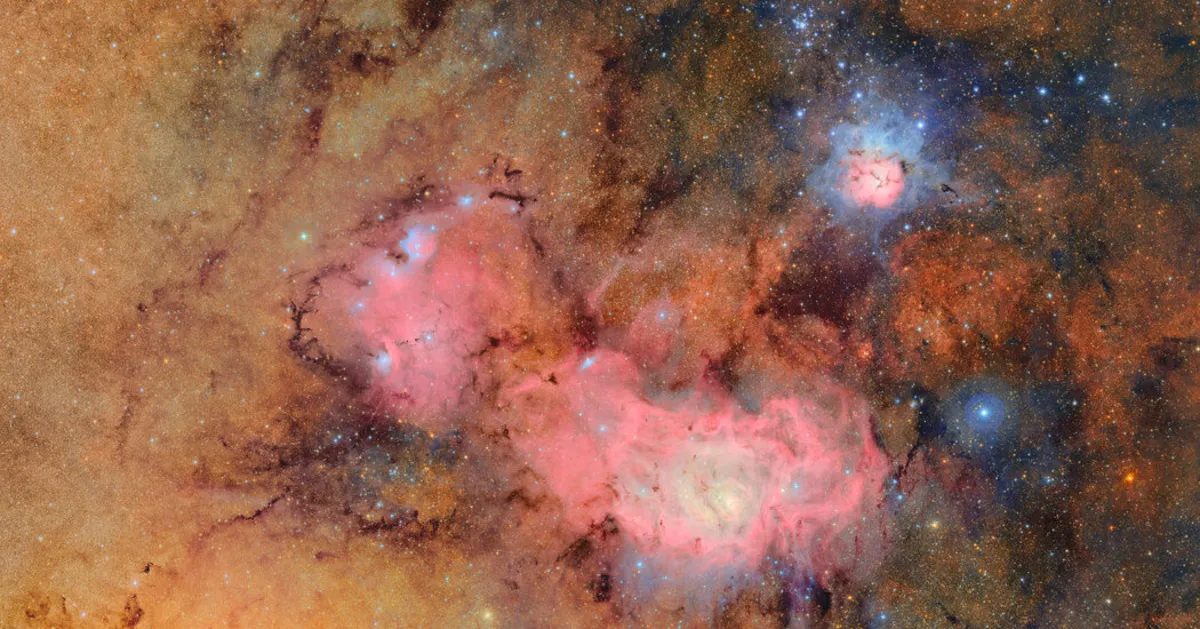
On Monday, cosmic enthusiasts and astronomers alike were treated to a stunning first full view of the universe, showcasing the remarkable capabilities of the new Vera C. Rubin Observatory. Among the breathtaking images released was a vibrant and mesmerizing view of the Trifid Nebula and the Lagoon Nebula, both of which are located thousands of light-years away in the constellation Sagittarius.
The Trifid Nebula and Lagoon Nebula are two of the most photographed celestial objects, frequently captured by both amateur and professional astronomers. However, the new images from the Vera C. Rubin Observatory offer a unique perspective. While previous instruments could produce detailed photographs, their narrow field of view limited them to capturing only a small slice of these expansive cosmic clouds.
According to Steven Ritz, a physicist at the University of California, Santa Cruz, and the project scientist for the construction of the observatory, “You’ve not seen the whole thing, all captured at once at this depth with so many objects there.” This statement highlights the revolutionary imaging technology employed by the observatory, which allows for a comprehensive view of the cosmos like never before.
The images not only showcase the scientific capabilities of the observatory but also reveal the stunning beauty of the universe. “That, I would point out, is new. And just how pretty it is,” Ritz added. The vivid colors and intricate details captured in these images are sure to inspire awe and curiosity among viewers, further igniting interest in astronomy and the wonders of space.
The release of these first full images from the Vera C. Rubin Observatory marks a significant milestone in astronomical research and imaging technology. With its ability to capture expansive views of celestial phenomena, the observatory is set to transform our understanding of the universe, making it an exciting time for both astronomers and space enthusiasts worldwide.